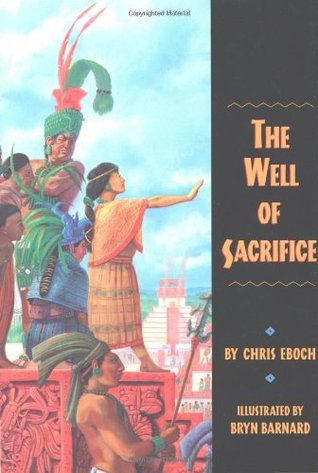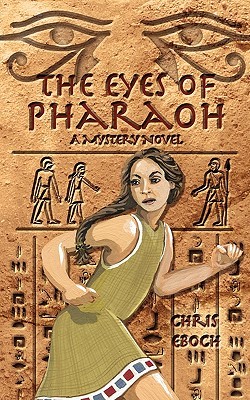Maybe your story has been going along well. But then you get stuck. For me, this usually means that I don’t know what happens next. I may know where the story is going in the long term, but I’m not sure about the next piece.
What will your character do in the next five minutes? That’s
right, just five minutes. It’s easy enough to figure out that. Of course,
sometimes the character doesn’t do anything interesting in the next five
minutes. Keep looking ahead. What happens after that? And after that?
Here’s an example from my middle grade historical novel, The Well of Sacrifice. The
heroine, a Mayan girl named Eveningstar, has been captured by the evil priest
and sentenced to death by sacrifice. What does she do? Well, she’ll try to
escape, of course. How? There’s not much she can do during the day, with guards
and other people all around. I’ll skip ahead.
Now it’s night time. Does she quietly go to sleep? Of course not!
She’ll be thrown into the well of sacrifice in the morning, so she’s too
anxious to sleep. She’ll sit up, listening to the guards outside her door.
She’ll wait for her opportunity.
What opportunity? What if one of the guards leaves for a few
minutes, perhaps to go to the bathroom. With only one guard outside, she has a
chance. She’ll look around for a weapon....
And my character is off and running, on the next part of her
adventure.
Another Perspective
You can also try looking at the action from another point of view –
that of the villain. If you have an antagonist, what is that person doing to
foil your hero? Whether it’s a criminal, a bully, an evil sorcerer, or parents
who “only want the best” for their child, keep them active in the story, causing
trouble.
I used this technique for my middle grade mystery novel, The Eyes of Pharaoh, where the
main characters were trying to find a
missing friend. What would they do next? I couldn’t figure out anything exciting
enough.
Then I checked in with my villain. Was he just sitting around
waiting for the heroes to act? No! He had plans of his own, plans to set a
trap... and then I knew what would happen next.
Taking the Right Kind of Break
Many of these tricks require thinking first, before you start
writing. You might find it easier to do that away from your desk. If the
computer is starting to feel like an enemy, step away from it for awhile. Try
jotting your notes longhand on a piece of paper, or thinking about your story
while you fold laundry or ride your exercise bike. I find that taking a walk
helps me sort out my thoughts. I often take a tape recorder along and dictate
into it, but even simply thinking about the problem can help.
You may need to experiment to find your own techniques for
overcoming writer’s block. Some writers go to a library, café or park to write.
Some find that ideas come to them in the shower. Or perhaps if you fall asleep
thinking about a story problem, you’ll have the answer in the morning.
Maybe you need to talk about the problem with a friend. Even people
who don’t write can have fun brainstorming story ideas. When my mystery heroes
had to escape from their trap, I asked a dozen people – including an engineer
and a former military commando – for ideas. They came up with an amazing
variety of possibilities. I didn’t wind up using any of them, but they got my
own mind thinking creatively.
So is there a cure for writer’s block? Not a cure, perhaps, but a
variety of treatments. Try these suggestions, and experiment to find new tricks
that work for you. You may still get stuck, but hopefully you’ll get those
fingers flying soon, and fill up that blank white page with nice black words.
Title:
Advanced Plotting
Publisher:
Pig River Press
Date
Published: December 1, 2013
Genre:
writing craft
Word
Count: 35,000
If
you struggle with plot or suspect your plotting needs work, this book can help.
The Plot Outline Exercise is designed to help a writer work with a completed
manuscript to identify and fix plot weaknesses. It can also be used to help
flesh out an outline. Additional articles address specific plot challenges,
such as getting off to a fast start, propping up a sagging middle, building to
a climax, and improving your pacing. A dozen guest authors share advice from
their own years of experience. Read the book straight through, study the index
to find help with your current problem, or dip in and out randomly — however
you use this book, you’ll find fascinating insights and detailed tips to help
you build a stronger plot and become a better writer.
This
really is helping me a lot. It's written beautifully and to-the-point. The
essays really help you zero in on your own problems in your manuscript.
The Plot Outline Exercise is a great tool! – Carmen O.
Excerpt:
It’s hard for writers to judge their own work. Sometimes we are so in
love with the ideas and characters that we can’t see the flaws in the
manuscript. Sometimes we know what we wanted to convey, so we don’t realize we
didn’t put it clearly on the page. Sometimes we’re just not experienced enough
to recognize the problems, let alone know how to fix them.
The Plot Outline Exercise can be used with a critique group and would be
great for a writing retreat. It can also be used when you’re on your own. The
goal is to first help you step back from the manuscript and view it as a whole,
so you can see the big picture. This will help you find places where something
is missing, redundant, or otherwise unnecessary; sections that don’t make sense
or don’t fit smoothly into the whole; and other problems. Once you understand
the big picture problems, you can start seeing how to fix them. From there you
can narrow your focus to the chapter, scene, and paragraph level, finding and
fixing smaller flaws. Using the Plot Outline Exercise is like having an
experienced teacher analyze your work and point out the trouble spots.
Take the time to do the Plot Outline Exercise properly. You may be
overwhelmed when you start to realize how much work you have left to do. Put
down your manuscript for a while and do something fun. Then come back ready to
work. Think of all the energy you put into the first draft. You don’t want to
waste all that time and effort! If you start submitting or self-publishing your
story before it’s ready, or if you just give up, you are throwing away those
hours of hard work. Make them count, and make your manuscript shine, by
devoting the necessary time to revisions.
Buy links:
Author Bio:
Chris
Eboch’s novels for ages nine and up include The Genie’s
Gift, a middle eastern fantasy, The
Eyes of Pharaoh, a mystery in ancient Egypt; and The
Well of Sacrifice. Her book Advanced Plotting helps writers
fine-tune their plots. Learn more at www.chriseboch.com
or her Amazon page.
Chris also writes for adults under the name Kris Bock. Kris
Bock writes novels of suspense and romance involving outdoor adventures and
Southwestern landscapes. In Counterfeits, stolen Rembrandt paintings bring danger to a small New Mexico
town. Whispers in the Dark involves archaeology and intrigue
among ancient ruins. What
We Found features a young woman who stumbles on a murder victim, and Rattled
follows a treasure hunt in the New Mexico desert. To learn more about her
latest work, visit www.krisbock.com or
her Amazon page.
Author Links:
Chris Eboch Amazon Author Page
Chris Eboch GoodReads Author
Page
Kris Bock Amazon Author Page
Kris Bock GoodReads Author
Page
Twitter @Kris_Bock





Hi Chris,
ReplyDeleteWelcome to the Snarkology! Thank you for participating in Blocked! Great tips. I've employed all of these techniques myself at some point. :-)
Thanks much for the excellent tips. I learned several new ones today, and will use them on my current WIP. Appreciate your help!
ReplyDeleteThanks for hosting me! I'm glad to be of help.
ReplyDeleteLove reading everyones posts on Writer's Block. Love your way of dealing with it, just focusing on the next 5 minutes.
ReplyDelete